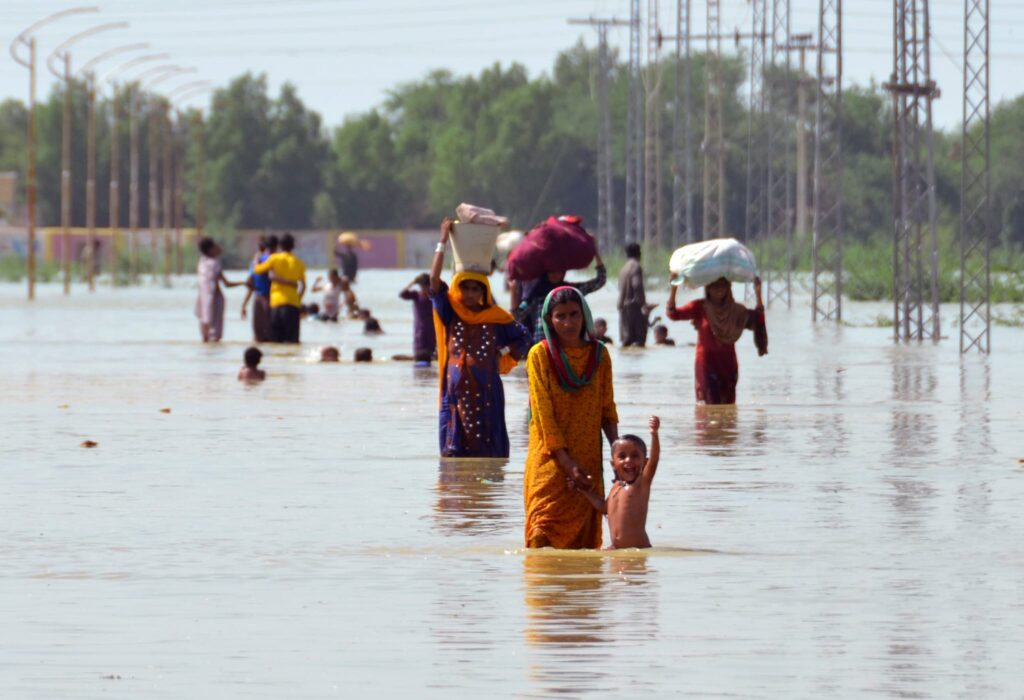Paris ( Imran Y. CHOUDHRY):- The impact of the ongoing monsoon season continues to worsen, with fatalities due to flash floods rising to many casualties and injuries nationwide since 26 June in Pakistan. Khyber Pakhtunkhwa remains the worst-affected province, followed by Punjab, Sindh, and Balochistan. Heavy rainfall has damaged hundreds of homes and led to the loss of many livestock.
The current heatwave in Gilgit Baltistan region, as the temperature reached 48.5C, intensified the glacier melting resulting in glacier lake outburst flood and soil erosion that have disconnected roads, damaged homes, agriculture and disrupted power and water supplies in various areas.
Many people died in the northern region of Gilgit-Baltistan, when a cloudburst caused floods and landslides, stranding more than 200 tourists who were later rescued. “So far, we have rescued between 200 and 250 people in various areas who arrived for tourism purposes. All of them are Pakistani nationals. Meanwhile, between 15 to 20 people are still missing, and search efforts are ongoing,” said a government official in Gilgit-Baltistan,
In the 24 hours, 63 casualties and 290 injuries were reported across Punjab. A state of emergency has been declared in several districts. Between 26 June and 26 July, the National Disaster Management Authority reported 124 fatalities and 264 injured people countrywide, of which 103 deaths and 393 injuries in Punjab, in addition to 522 damaged houses and nine damaged bridges. District Chakwal recorded above 400 mm of rain overnight due to cloudburst, causing flash floods across the city. District Rawalpindi issued an evacuation warning as the city received above 200 mm rains leading to flash floods on 17 July.
According to the National Disaster Management Authority (NDMA) of Pakistan, as of 26 July, around 242 fatalities have been reported including 135 in Punjab and 56 in Khyber Pakhtunkhwa. Over 600 people have been injured across all provinces, thousands of houses fully or partially damaged and over 10,000 people have been affected as reported.
Amid the emergency, the UN World Food Programme (WFP) and the Government of Pakistan this week launched a climate-risk project in Khyber Pakhtunkhwa’s Buner and Shangla districts.
The initiative will establish early warning systems, train communities in safe evacuation and strengthen local capacity for disaster response.
The disaster also inflicted immense economic damage and reversed years of development efforts.
Experts warn that erratic monsoon patterns, amplified by climate change, are hitting the country and others across southern Asia harder each year.
